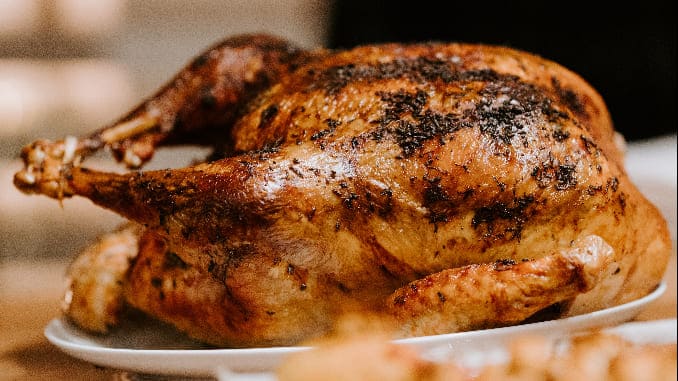Even as Grocery Store Prices Are Rising, Rotisserie Chicken (and Other Meat) Remains Artificially Cheap
Photo by Claudio Schwarz/Unsplash
It’s the end of a long workday, and you just realized that you have nothing in the fridge. An overpriced UberEats order just isn’t feasible for your bank account, but the idea of actually cooking a full meal is enough to make you lose your appetite. Enter the grocery store rotisserie chicken. The smell of its spices and its thick, crunchy skin waft past you as contemplate buying a (probably more expensive) chunk of meat that you’ll have to season and cook yourself. If you’re like me, one whiff of that familiar but seductive aroma is all you need to know that you will not, in fact, be cooking anything that night and will instead succumb to a juicy, crisped Costco drumstick.
It’s a tale as old of time but one that ultimately makes economic sense for stores like Costco and BJ’s. Technically, stores that sell their rotisserie chickens for so cheap are selling them at a loss. They’re actually losing money on these chickens. These types of products are known as “loss leaders,” and they essentially work by attracting customers to the store. The store may lose money on the rotisserie chicken, but chances are, customers are going to buy other items while they’re there, thereby making it a profitable sale for the company.
As inflation causes food prices to rise at alarming rates—CNN reported that food prices were up almost 10% from April 2021 to April 2022—rotisserie chickens are not jumping in price, despite the fact that meat prices rose even more steeply during the same time period. Rotisserie chickens are likely to become even more of an important staple in consumers’ diets as they make changes to their grocery-buying routines to account for these rapidly rising prices. And considering that many Americans are struggling to pay for groceries right now, it’s not a bad thing that there are relatively affordable options available that don’t come from a fast food joint.
But even though meat prices are on the rise, it doesn’t mean we’re paying a fair price for them. Truthfully, even now, the meat we eat costs us less than it takes to produce—and that cost doesn’t account for the environmental toll of meat production or the human toll (in the form of difficult working conditions and low wages) on the workers who produce the meat that ends up in our grocery stores. These prices are kept artificially low by government subsidies for soy and corn, which end up in animal feed.
-

-

-

-

-

-

-

-

-

-

-

-

-

-

-

-

-

-

-

-

-

-

-

-

-

-

-

-

-

-

-

-

-

-

-

-

-

-

-

-








































